Andy Rouse's Shots of the MonthText and photography copyright Andy Rouse. All rights reserved.
Editorís Note - Thumbnails are links to larger images, presented in slide show format.
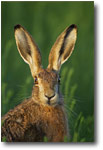
Photo 1
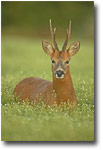
Photo 2

Photo 3
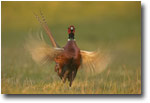
Photo 4
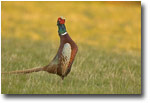
Photo 5
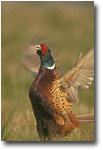
Photo 6

Photo 7
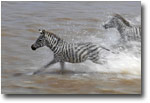
Photo 8
|
|
Hello all! This month Iíve been typically stuck in the office as Iíve several pressing projects that need to be completed. Life as a professional wildlife photographer is one of compromise between my love of wildlife and the need to keep ahead in business. Everyone knows that I love animals and would readily spend every day of my life photographing them. Unfortunately my travelling costs real money, and a lot of it, and so to live out my dream I need folding cash. One day I hope to be successful enough to have staff that can handle all the business stuff (and the bloody RAW processing) but for now Iím a one man band. Luckily at this time of the year the evenings are long enough where I can take advantage of my local wildlife after a full day in the office, so this monthís column shows some recent images that I have taken, all less than a mile from my house. Proof that you donít have to travel the world to find good wildlife, so many of us have it right on our doorstep.
Photo 1
Brown Hares are notoriously difficult to approach but if you have the knack then they can be ďpersuadedĒ to sit still long enough to rattle off some shots. My hare knowledge has been gained by painful experience but also from local gamekeepers who know old tricks that have long been forgotten by most. This hare sat obligingly next to my 4x4 for at least a minute, long enough for my 1D MK2 to burn a few thousand images. Iíve started to use the 1D MK2 now by default instead of my 1Ds as the small pixel size (IMHO) yields a better result with less chance of aliasing problems. As usual I had the wrong lens for the job; my 500mm IS was just far too long as the hare was sitting too close to the car. The best bet was, as always, to get what I could rather than trying to change lenses. The obvious shot was the portrait one, a quick twist on the lens barrel and there it was. I knew that commercially it was a real banker, plenty of room for a cover title and barcode! The only problem so far has been getting it ahead of the queue and out to clients, in fact this is the first time that it has seen the light of day.
Photo 2
The Brits reading this will know all about my affinity with roe deer. For our American readers, our roe deer is similar to your white tail, except maybe itís a lot more elusive. Most brit photographers, amateur and professional alike, consider getting a good image of a roe deer to be a major achievement. For me itís a major buzz as it pits my fieldcraft and stalking knowledge against the highly developed senses of this wonderful mammal. The key to getting good deer shots is to know your animal; if you know how deer detect our presence then you can outwit them. It is vital to use the wind to your advantage, to be where they like to be before they are and to wear the appropriate camouflage gear for the surrounding habitat. Iíve always worn RealTree style clothing and choose a general forest pattern rather than a specific tree like a beech or oak so that I can adapt to many different habitats. Bucks like this one are a nightmare to get; one mistake and they are off into the distance. With this chap Iíd been in place under a fallen tree since two hours before dusk and was beginning to get severe cramp in my legs. Gingerly I stretched out one of my legs to try to relieve it, just as I heard a rustle to my left. I froze and out of the corner of my eye saw the buck come cautiously from the forest, the wind direction favouring me (for once). He moved out into the field, and I kept motionless as he was still on maximum alert and ready to run at the slightest danger. Halfway across the field he stopped to start feeding and I used to opportunity to release the Sidekick and gently ease my 500mm lens around towards him. Eventually it got there, through the viewfinder he looked right at meÖÖÖ.then his ears pricked up. He must have caught the briefest of movements but I was so well hidden that he couldnít be sure what creature I was. I tried to think like a hedgehog, though the lens I saw his nose moving trying to get a scent of me. Confused he took a few steps forward and then a few more, within a minute he had halved the distance and was staring intently straight down the lens. It was now or never so I made the decision and took a single shot, immediately freezing behind the camera to minimise the chance of being seen. He heard the click (the 1Ds is hardly the quietest camera around) and his face took on a slightly startled look; I resisted the temptation to take anything else as I didnít want him to take fright and bolt off. One negative experience would cause this buck to avoid the area and run at the slightest hint of danger; Iíd never get close to him again. So I waited for agonising minutes until he sauntered off, still suspicious but not frightened. Four hours wait for one fleeting shot, plus all the observation beforehand, was it worth it. You bet, itís a cracking buck and in a few months Iíll give him another go. By then the cramp in my leg may gave gone too!
Photo 3
Shots like the roe deer above are the result of much hard work, but as a wildlife photographer we have to be able to make the most of any unexpected one-off encounters. I was driving along a track in my 4x4 when I saw this sparrowhawk on the side of the road feeding on a pigeon. Seeing my car the bird flew off into a nearby thicket and I knew that as the kill was barely started it would soon come back. The problem was that it would likely take the kill into the thick bush closeby and I really wanted to get some shots of it feeding. Quickly I pulled my 4x4 up right next to the kill, reached down and placed a tent stake right through it to hold it firmly in place. Then I backed right off, set up my 500mm lens with a 1.4x teleconverter on a beanbag and covered the window with a thick camouflage net. After ten minutes or so the sparrowhawk returned and I let it feed for some 10 minutes before taking the first shot. This image was taken as it plucked the breast feathers of the pigeon and I think it illustrates the whole feeding process very well. I did consider (briefly) blurring the feeding but after a couple of test shots quickly ditched this idea as a bad one. Commercially this shot is the kiss of death as very few clients will publish realism like this; in general they are used to seeing perfect portraits in perfect light and the general public just arenít used to seeing feeding and death.
Photos 4, 5, 6 and 7
My pheasant pictures have always been appalling, which is rather embarrassing since I am known for my game photography. This mating season I decided to do something about it and spent a week following male pheasants around my local estate as they chased the females. Some of the chaps were real studs and had superb harems of females; these were a bad choice for me as they were confident and didnít need to display. So I found a couple of feather perfect cocks and stuck with then in their attempts to get a female. Spending a week with them was a real pleasure for me, although I could definitely give both of them a few tips on wooing the ladies. One cock was far too keen and showed far too much interest too early (a clear mistake), the other had a voice that had seen better days. Humour aside, the area of mate choice (which my partner TJ did her doctorate in), is a complex one and the females look for many different attributes in their perfect mate. Luckily leaving the toilet seat down is not one of them!
Photo 8
As I write this Iím preparing for 5 solid weeks of travelling. My first port of call is to the Masai Mara for the annual migration, which promises to be awesome. The shot above was taken during last yearís migration, which I did not make the most of due to my lack of experience with it. This year I know the score and the best places to go, so hopefully Iíll get the shots that I need. Iím taking two sets of clients along to work alongside me so hopefully in the next NPN column will show some of their work from the trip. I mentioned two trips; the second is to Alaska for Grizzlies, trying to get some final shots of them before they den down for the winter. So I hope to speak to you again in about 6 weeks, when Iíll have a bumper edition of Shot of the Month. Bye for now - wildebeest here I come!
AR-NPN 1153
Andy Rouse is a professional wildlife photographer based in the U.K. His professional credits include hosting the Discovery Channelís Wildlife Photographer TV series, and the publication of six books, including his soon-to-be-released The DSLR Masterclass. Andy's images are represented by NHPA and Getty Images and are sold worldwide. To learn more about Andy, check out his NPN bio. To view more of Andy's work, visit his website at www.andyrouse.co.uk.
Comments on NPN wildlife photography articles? Send them to the editor.


| 


